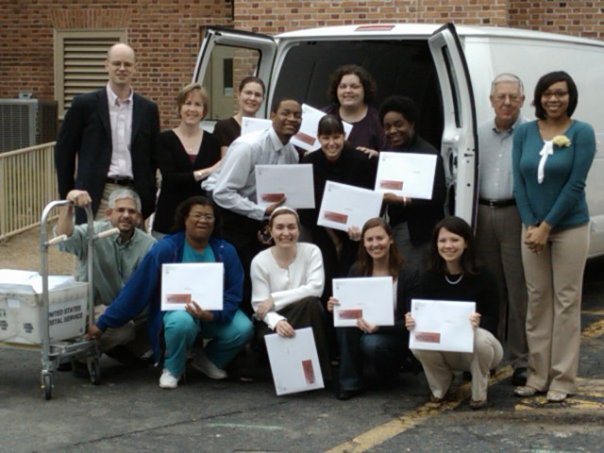Numbers and Letters
It takes a lot more than just an assessment of GPAs and SATs to go from this to this although many believe otherwise. At every information session, at every high school visit, at every college fair my colleagues and I hear from students who believe they need a 4.0 and a 1400 to get into W&M. The focus is almost always on numbers, and that’s natural. People want something tangible to which they can compare themselves. They want to be able to quantify their chances for admission. But numbers alone could not possibly lead to the creation of a student body as dynamic, diverse, and talented as the one that exists here at W&M. Do numbers play a role in our decision-making process? Absolutely. Are they the be all and end all of the application? Absolutely not.
William & Mary practices what’s referred to as holistic admission meaning there are no minimum requirements an applicant must meet to be admitted. It also means we do not make decisions based on formulas and numbers. We consider the rigor of a student’s coursework, the grades he/she received, the standardized test scores, extracurricular involvements, recommendations, essays, and contextual information for the student’s high school, area, and background. And those are listed in no particular order by the way. We read every application at least twice in order to provide the most thorough and exhaustive review possible. Each applicant will shine in some area or areas of our review process and each applicant will similarly be less competitive than other applicants in other areas. Sometimes a student writes a fantastic essay and that might be a tip factor. Sometimes a student demonstrates an incredible talent. Other times, a student has comes from an area or culture or background that would add significantly to the in and out-of-class discourse here at William & Mary. Sometimes a student succeeds despite overwhelming odds. Sometimes a student excels in class above and beyond the typical competitive applicant. Why a student did or did not get in is not a science, it’s an art and that art is created by a wide variety of elements.
 In our decision-making we ask ourselves not just the typical questions (how has the student performed academically, what is the student involved with outside of class) but we also ask ourselves questions to put those answers into context. What is the size of the student’s senior class? How competitive is the high school environment? What is the student’s background? How many advanced courses are offered at the student’s high school? Are there extenuating circumstances impacting this applicant? If we just talked about numbers alone, the letters we mail would lack meaning. When we ask questions, when we examine personal qualities, when we discuss the pros and cons of each decision, we give our letters substance.
In our decision-making we ask ourselves not just the typical questions (how has the student performed academically, what is the student involved with outside of class) but we also ask ourselves questions to put those answers into context. What is the size of the student’s senior class? How competitive is the high school environment? What is the student’s background? How many advanced courses are offered at the student’s high school? Are there extenuating circumstances impacting this applicant? If we just talked about numbers alone, the letters we mail would lack meaning. When we ask questions, when we examine personal qualities, when we discuss the pros and cons of each decision, we give our letters substance.
Students often ask if they should even attempt an application to a selective institution like W&M. I tell them that of course they should. The cost to them is minimal (a $60. application fee and the time spent on the Common Application which they are likely completing for other schools anyway) but the benefits could be beyond measure. Given our lack of base requirements and our extensive review process, they’ll never have the opportunity to be more than a number and to receive an admission letter unless they give it the old “College try.”
– Wendy Livingston




No comments.
Comments are closed on posts older than one year, but we still want to hear from you. If you have a comment or question for us, please email admission@wm.edu.